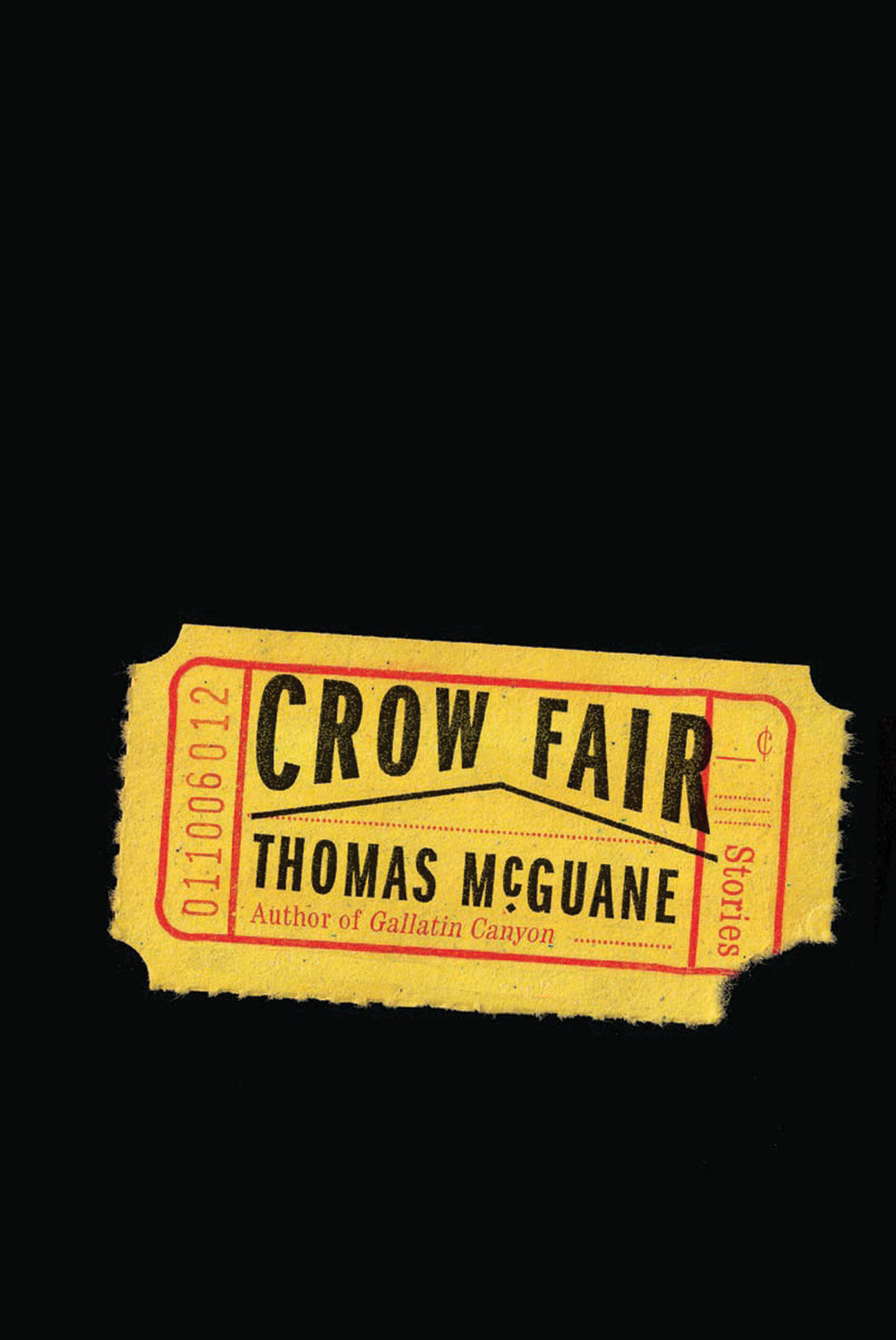
31 Jul Books: Reading the West
While Thomas McGuane’s new collection of short stories, Crow Fair (Knopf, $25.95), more than demonstrates his gifts as a writer, it’s not a precious, “I’m such a great writer” collection of short stories full of tricks of the trade. As usual, McGuane gets out of his own way and lets his flawed, funny, confused, lonely, ambitious and otherwise interesting characters reveal their views of the world in language that’s precise but not spare, vivid but not purple. The people and places are familiar Montana types and landscapes; McGuane’s stories inspire rueful recognition and even a little hope that the pictures he’s painted of ice fishing and chance encounters at the small-town IGAs really are what Montana is like. Though every one of the 17 tales in this book has a Montana setting, the characters and events and places are all distinct, and the themes he explores touch on universal human experiences from weight loss to marriage to divorce to infidelity to aging.
In “Weight Watchers,” a grown son who has opted for a rural Montana lifestyle and construction career hosts his besuited father when his mother kicks Dad out for refusing to lose weight. The son’s purposeful detachment from his parents’ struggles makes him an entertaining narrator as he observes, “As an only child, I was the sole recipient of my parents’ malignant parenting.”
The interactions between father and son — and the eventual trip to the fire station for a weigh-in — are both funny and introspective. Similarly, the grandmother and grandson pair at the heart of “Grandma and Me” have a relationship with real feeling at its heart (and a lot of discussion of meth labs and hapless behavior by the grandson at its surface).
McGuane’s ability to tease the feeling out of some of the most frightening things human face (especially interacting with other humans), while maintaining his wit, makes this collection masterful. The story “The Casserole” is narrated by a man who is so clueless about his own callous attitudes that it’s genuinely funny when his wife of 25 years hands him a lunch pail and sends him packing. But when John, the narrator of “Canyon Ferry” and a newspaper reporter who has lost his job and whose ex-wife has started a “stable relationship with a reliable man,” also loses his relationship with his son after an ice-fishing trip, it’s heartbreaking. John, after all, is a man so sensitive, he finds that “the three women he bedded during the proceedings were impossible to avoid, and when he ran into them, whether at the post office, the bank, or the Safeway, he just apologized.”
In one of the longer stories in the book, “River Camp,” the two protagonists are completely at odds with each other and with nature while on a river trip plagued by bad weather, bears and a malevolent guide. Tony is being divorced by Jack’s sister; he is preoccupied by a mistake he made in surgery before the trip and the lack of cell phone service on the river. But really, the two men have been at odds with each other for years. They relive their grievances as they eventually have to make their way without their guide. Even when you know what the outcome will be, the dialogue and characters’ inner observations keep you on the river with them.
The title story, “Crow Fair,” is the tale of two brothers whose mother has dementia. The narrator, Earl, observes in the second paragraph of the story, “Kurt and I put Mother in a rest home a few months back. I don’t think you can add a single thing to putting your mother in the rest home. If ever there was an overcooked topic, popping Ma in the old folks’ home has to be a leading candidate.” Of course, as “Mother — we never called her Mom” deteriorates, the side effects of her condition have unsettling effects on the brothers. The power in the story, of course, is that there’s much more to say: not just about Mother and her past, but also about the different ways siblings experience their parents. He explores how we view end-of-life decisions, and reveals that we may not really know our parents or our siblings at all. McGuane coaxes out the pathos and the humor in the situation; there’s nothing unlikely about the scenario he puts forth, but still it turns out there is much more to say.
McGuane is an artist, throughout his fiction-writing career his work has been masterful. This collection is both a seminar in the short-story form and a volume you’ll want to dip into again and again for pure enjoyment.
Literary Butte: A History in Novels and Film by Butte, Montana, native Aaron Parrett (The History Press, $19.99) is more than a survey of the large number and variety of books and movies that have been set in or inspired by the town once known as the “Richest Hill on Earth.” Parrett looks at stories of Butte starting with the fiction of the late 19th century’s Gilded Age and concluding with the works of Sandra Dallas, Ivan Doig and other late 20th and early 21st century masters. As a survey, this book will entice readers to pick up the works of the past, some of which are still popular today, and some of which time has essentially forgotten. But what’s more interesting about this book is the fact that it goes beyond just sharing the details of the writers’ literary careers, offering précis of the books themselves. It turns out that it may be difficult to separate the “facts” from Butte’s past and the images that it evokes from the “truths” that sometimes only a fictional hand can bring to a story.
In spite of 13 decades of booming and busting, Butte never seems to truly bust, but rather reinvents itself periodically — always inspiring affection among its residents and visitors. Parrett’s evident love for the town with all its historical and modern flaws comes through in his approach to telling the story of its literary heritage. He begins with the now-forgotten A Blind Lead: The Story of A Mine by Josephine White Bates, written in 1888, and offering, Parrett says, “a rare documentary look at an important, if also neglected, sliver of Butte history.” Bates’ book covers the mining-camp era, before Butte became the glittering city of the Gilded Age chronicled in the better-known, somewhat experimental and controversial work of Mary MacLane a few years later. MacLane’s work leads naturally to a discussion of Willis George Emerson, and then to that of the famous Dashiell Hammet, whose novel Red Harvest was inspired by his own experience in Butte as a Pinkerton detective during the violence after the 1917 Speculator Mine disaster.
Throughout Literary Butte, Parrett gives glimpses into the careers of these writers. He analyzes their work in chronological order, revealing the story of the place and times in which the books were written or set. Parrett writes, for example, that “by the 1940s, Butte had gained enough distance from its glory days to develop a literary nostalgia for them.” In describing Joe Duffy’s Butte Was Like That, Parrett says:
James Joyce once bragged that if ever Dublin were to be destroyed by war or other catastrophe, the city could be rebuilt brick by brick from his descriptions in Ulysses; one could make the same claim about Butte, working from Duffy’s Butte Was Like That. Duffy has a marvelous ability to resuscitate the Butte of his youth and turns a clever phrase or two in nearly every chapter.
In both fiction and nonfiction, Butte’s mythic proportions have loomed large in the American imagination. Some of those imaginings were fueled by literary portraits, from the serious works of the 1920s to the pulp fiction of the 1950s. Parrett goes on to describe later works, such as Sandra Dallas’s first novel Buster Midnight’s Café and Ivan Doig’s Work Song, which take a longer view into the past but owe much to the descriptions of the writers who came before them.
Scattered throughout this look into writing about Butte, America, Parrett includes photographs of the writers, of Butte and its people, and reproductions of long-out-of-print book covers, which add to the overall experience. The film survey might have been better integrated into the chronological approach of the rest of the book (it forms a separate section in the last quarter of the text) but it’s still a very interesting peek into filmmaking and the movies inspired by the mining city, including photographs and movie posters. This is a great addition to the literature of Butte in its own right.
Readers who have followed the career of painter, fly fisherman and part-time private detective Sean Stranahan through his adventures in Keith McCafferty’s Sean Stranahan mystery series will find much to enjoy in the fourth book, Crazy Mountain Kiss (Viking, $26.95). Readers new to the series that started with The Royal Wulff Murders in 2012 can easily use this latest installment as jumping off point into the world of Stranahan and his crime-fighting partners. McCafferty, who is the survival and outdoor skills editor for Field & Stream and a Bozeman, Montana, resident, has created a cast of memorable characters and populated a believable and authentic Montana setting for them to inhabit. He has a knack for plotting stories that keep you turning pages, while infusing those plots with earthy details, place names, settings and scenarios that ground the more bizarre twists and turns (this is mystery fiction after all) in a familiar world.
The hard-to-define relationship between Stranahan and Sheriff Martha Ettinger (sort of a Montana Marge Gunderson from Fargo, without the accent) is just one of the common threads running through the series. Sheriff Ettinger doesn’t call on the erstwhile detective for help because she’s incompetent — far from it. She just knows when to invite the experts. In Crazy Mountain Kiss, the sheriff is anxious about an impending visit from her son when a member of the Madison River Liar and Fly Tiers Club makes the unwelcome discovery of a dead teenage girl wedged in the chimney of the cabin he’s rented. Stranahan, an honorary member of the club for services rendered, is called back from a winter guiding in the Florida Keys to help investigate. It’s April in Montana and there’s still snow in the mountains.
The girl stuck in the chimney is Cinderella “Cindy” Huntington, a barrel racer and budding rodeo star who has been missing since November. Cindy’s mother, Etta, hires Stranahan to investigate her death: Was it murder or an accident? As McCafferty’s clever storytelling winds through the investigation to its dramatic conclusion, the potential villains and possible scenarios both play on type and defy it: from Cindy’s mother, a beautiful woman with a prosthetic arm due to a car accident that also left Cindy with a serious brain injury; to Jasper Fey, the stepfather who consults with Hollywood movies on horsemanship; to the mysterious hermit Bear Paw Bill. The plot moves briskly, so while readers may find themselves at once sympathetic to these characters and horrified by them, they will be keenly interested in seeing where the story takes them. The Montana setting includes dinner at Chico Hot Springs, and along with all the fishing, hunting, sexual deviance, romance and fly fishing, makes this a great summer read and sets up hope for the continuing careers of Stranahan, Ettinger and the rest of the series regulars.
Football heroes are no better and no worse than other boys, and Missoula, Montana, is no better and no worse than other towns — college towns or not — when it comes to dealing with sexual assault. And girls who are assaulted are no better and no worse than girls who are not assaulted. Those are some of the points that Jon Krakauer has been making in the media since his grenade of a book Missoula: Rape and the Justice System in a College Town (Doubleday, $28.95) was released. And they’re the points that he makes in the book itself, a book that he waged a legal battle to research and that meticulously, almost clinically, describes sexual acts perpetrated against the will of the women at the center of this story, before turning to what happens in the justice system — both on and off campus — in the aftermath.
As a Montana resident, a Griz season-ticket holder, a mother of daughters who will someday head off to college, a feminist and someone who agrees with most of Krakauer’s assertions, I still found this book troubling. Some of the reasons are obvious: The graphic descriptions of the assaults are difficult to read, even though the text is precise and even somewhat detached. As the story unfolds and the women come forward, the descriptions of what many rape victims describe as the second assault — the investigation — are horrifying. Even more upsetting is the behavior of the accused, their families and supporters toward the alleged victims. In Krakauer’s telling, there are clear villains, wronged protagonists and a whole cast of bunglers. He’s clearly haunted by what he perceives as the failings of the justice system (particularly those of the Missoula County Attorney’s Office), along with the campus culture that protected Missoula’s football heroes.
Krakauer is such a skilled researcher and storyteller that it’s easy to allow this book to sweep you up in its outrage. And make no mistake, we should be outraged. As Krakauer points out near the end of Missoula, “Females between sixteen and twenty-four years old face a higher risk of being sexually assaulted than any other age group. Most victims of campus rape are preyed upon when they are in their first or second year of college, usually by someone they know.” There are studies that indicate that one in four women in college today have been victims of rape, and 90 percent of those victims knew their assailant. When you read in detail about the struggles of these women as they decided to report — or more pointedly, to not report — these assaults (because they didn’t want to hurt the other person or because they blamed themselves), one has to wonder if those statistics aren’t underreported.
Where Krakauer’s narrative falls apart just a bit is when he’s discussing the protections offered to the elite football players at the University of Montana, the missteps made by both campus authorities and county officials in Missoula, the investigation by the federal Department of Justice into Missoula’s handling of sexual assault cases, the resistance to federal interference by the previous Missoula County Attorney, and most particularly the actions of current Missoula County Attorney Kirsten Pabst. Certainly when you follow Krakauer’s argument about what campus authorities did or did not do in the face of allegations, and how the university’s response became entangled with — and even stymied — law-enforcement efforts, it inspires a lack of confidence in Missoula’s justice system. In the end, I found that I believe different rules apply to members of elite sports teams. Further, I believe that Pabst exacerbated the situation in Missoula. But in the second third of the book, Krakauer argues those things in so many directions that he distracts from what is actually the key to this book: Missoula screwed up and its justice system failed the women he profiled.
But it’s not unlike most college towns in that regard. One reason for this: the prevalence of myths about sexual assault in our society, regardless of whether the assailant wears shoulder pads and a helmet in front of screaming fans.
The strongest, most powerful part of this book is the story of Jordan Johnson, a star Griz football player accused of raping an acquaintance. As outlined in Krakauer’s lucid and detailed account of the trial, Johnson’s case and eventual acquittal hinged on exploiting those myths — some of which did indeed tie into Johnson’s status as a campus hero. In describing the case, Krakauer seeks to answer some of the defense team’s questions — mostly based on cultural assumptions about how rape victims should act in the aftermath of an attack — by talking to an expert on the topic, Rebecca Roe. Krakauer quotes Roe as saying, “Being raped is such a traumatic experience … that it often results in seemingly bizarre behavior.”
Roe continues:
It was actually pretty common for women not to scream or call the cops in rape cases I prosecuted, at least partly because women aren’t wired to react that way. We are socialized to be likable and not to create friction. We are brought up to be nice. Women are supposed to resolve problems without making a scene — to make bad things go away as if they never happened.
Toward the end of his reporting, Krakauer reflects on learning that a woman he thought he knew well had been sexually assaulted. He writes he is “angry with myself for being so uninformed — not only about her ordeal but about non-stranger rape in general.”
He elaborates:
As the scope of my research expanded, I was stunned to discover that many of my acquaintances, and even several women in my own family, had been sexually assaulted by men they trusted. The more I listened to these women’s accounts, the more disturbed I became. I had no idea that rape was so prevalent, or could cause such deep and intractable pain. My ignorance was inexcusable, and it made me ashamed.
Perhaps Missoula — if we look at it as an indictment of rape culture instead of as a singular case study — will lead to changes not only on campus and in Missoula County, but also help destroy the myths that perpetuate these crimes.
OF NOTE: Books, Music, Movies & More
The Cow’s Girl: The Making of a Real Cowgirl (Sweetgrass Books, $16.95), by Charlotte Caldwell, offers a sweet, non-saccharine look at the life of a cow’s girl from the point of view of the cow — an orphaned Black Angus heifer named Olivia. This kind of photo book (mixing reality with a fictional animal point of view) often can feel amateurish and forced, but there’s something very appealing about Caldwell’s depiction of the day-to-day life of the Cow’s Girl. We follow her 4-H bucket-calf training, then watch as she preps for the fair. For this girl, ranch life is not just about the purple ribbons at the fair — it’s about haying time and charity. This look into the day in the life of a cow and her girl will be appealing both to girls who want to be cow’s girls and to anyone interested in the real inner workings of a ranch.
Bernese mountain dogs peer out the windows of a school bus on the cover of Tucker’s Seasonal Words of Wisdom, with illustrations by painter and sculptor Theodore Waddell and text by Lynn Campion (Bar R Books, $16.95). Waddell has become well known for his “landscapes with animals” and this collection is a follow-up to his previous book, Tucker Gets Tuckered, which also features the Abstract Expressionist artist and his adorable dogs. The paintings that illustrate the book are totally charming. A variety of Bernese carry backpacks and stuffed bears, snooze on sofas, contemplate soccer and tennis balls, and gaze on ducks. Each illustration and its accompanying text stands alone as a commentary on the seasons and on life — overall a delightful collection for kids and adults.
Taming Big Sky Country: The History of Montana Transportation from Trails to Interstates by Jon Axline (The History Press, $19.99) offers anything you ever wanted to know about the roads and trails that crisscross Montana, telling the stories of both the visionaries and the bureaucrats responsible for their creation. These intrepid men were adventurers and pioneers, making it possible to get from point A to point G and then back to point B. Axline’s prose is clear and thoughtful, if sometimes technical. But his enthusiasm for the subject (he’s also written extensively on Montana’s historic highway bridges and roadside markers) is engaging. The illustrations are what make this book, however. From the photograph on the back cover featuring the chapped-and-hatted cowboy and his horse looking down on the curve of paved highway hugging the side of a mountain, to the World War II era snowplow and historic cars and buggies, the pictures are worth a flip through the book just to see some of the amazing ways that we used to travel (and still do).
Just over the Ridge, the debut novel by Aud Steinfeldt (Sweetgrass Books, $14.95), tells the story of John Tousette and his family. Through short chapters that function as glimpses into the life of John — who is an avid hunter and outdoorsman with a fiercely independent side — his parents, his wife, his young son and the other characters who populate their world, Steinfeldt reveals truths about the relationships between fathers and sons, the adjustments required to move forward as a couple and then a family, and the fact that sometimes you can’t fix things — you just have to figure out a way to live with them. While some of the dialogue is a bit stilted and the author has a tendency toward “telling” when her “showing” has already created the mood or image needed, by the time you reach the climax of the story, you are invested in her characters and interested in what the author has to say. Overall, the layers of this novel work together well to create a lasting impression of this family and their emotional entanglements set against the backdrop of the contemporary mountain West.
- “Missoula: Rape and the Justice System in a College Town”
- “Crazy Mountain Kiss”
- “Just over the Ridge”
- “Crow Fair”
- “The Cow’s Girl: The Making of a Real Cowgirl”
- “Tucker’s Seasonal Words of Wisdom”
- “Taming Big Sky Country: The History of Montana Transportation from Trails to Interstates”
- “Literary Butte: A History in Novels and Film”




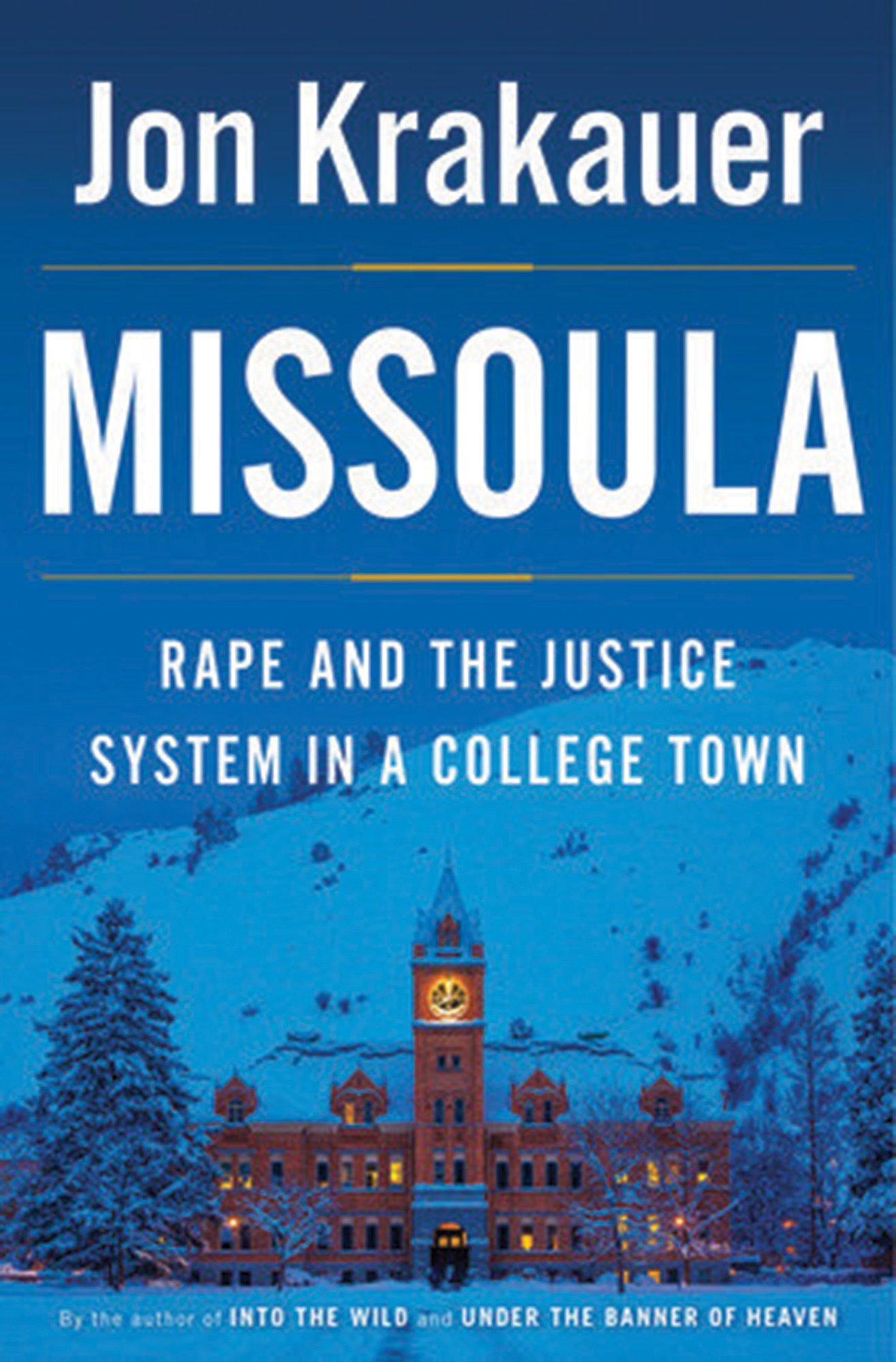
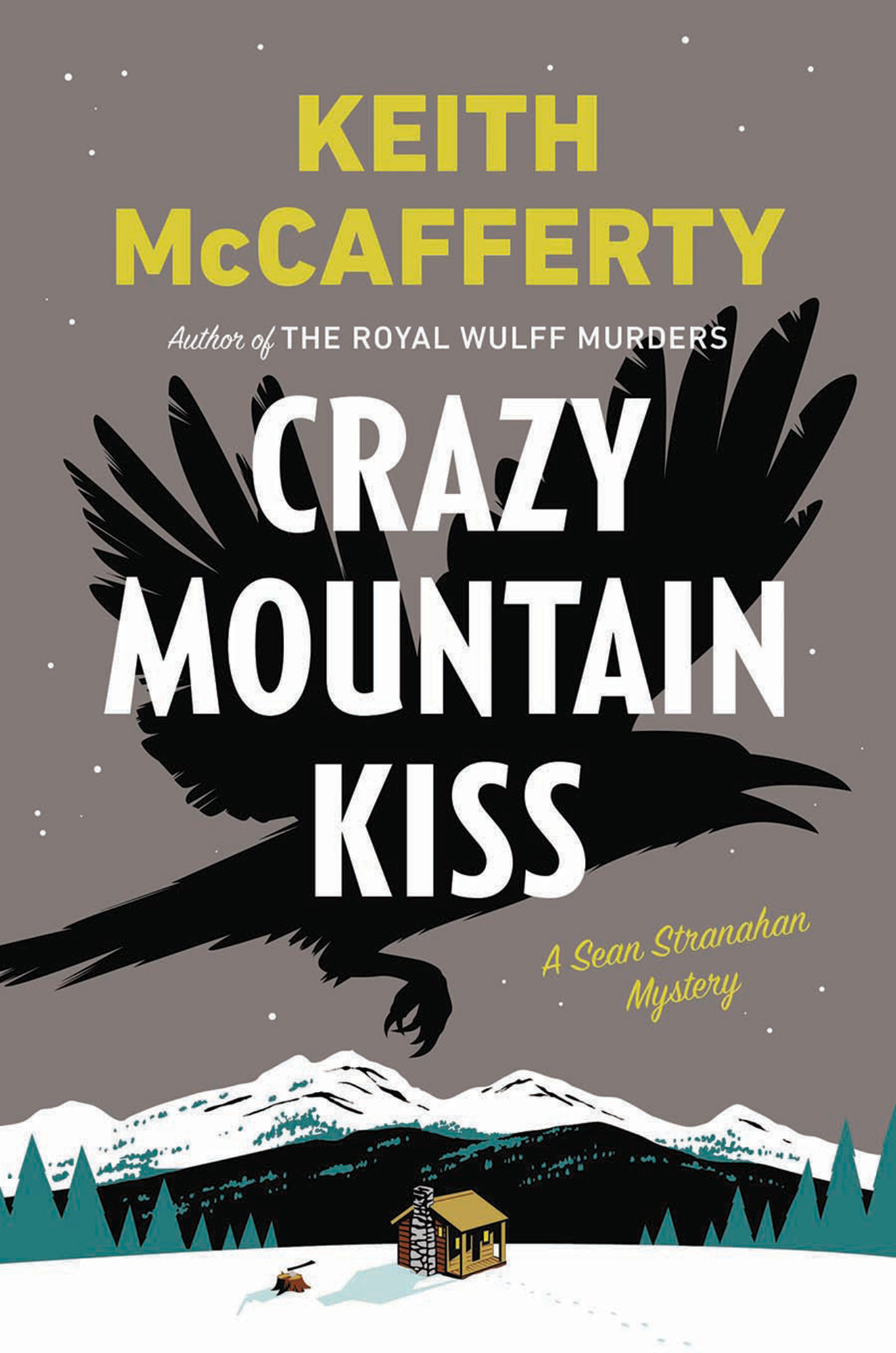
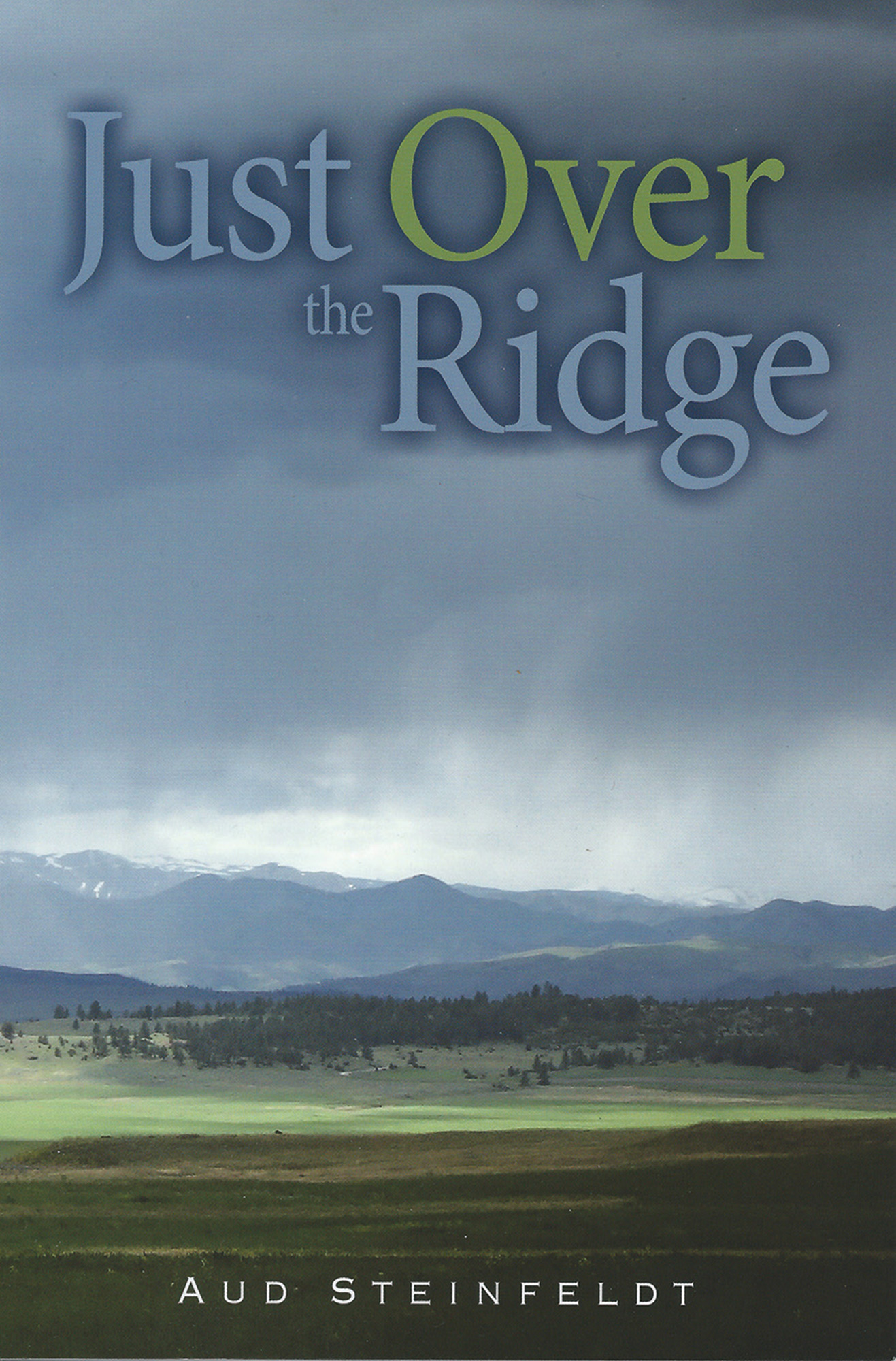


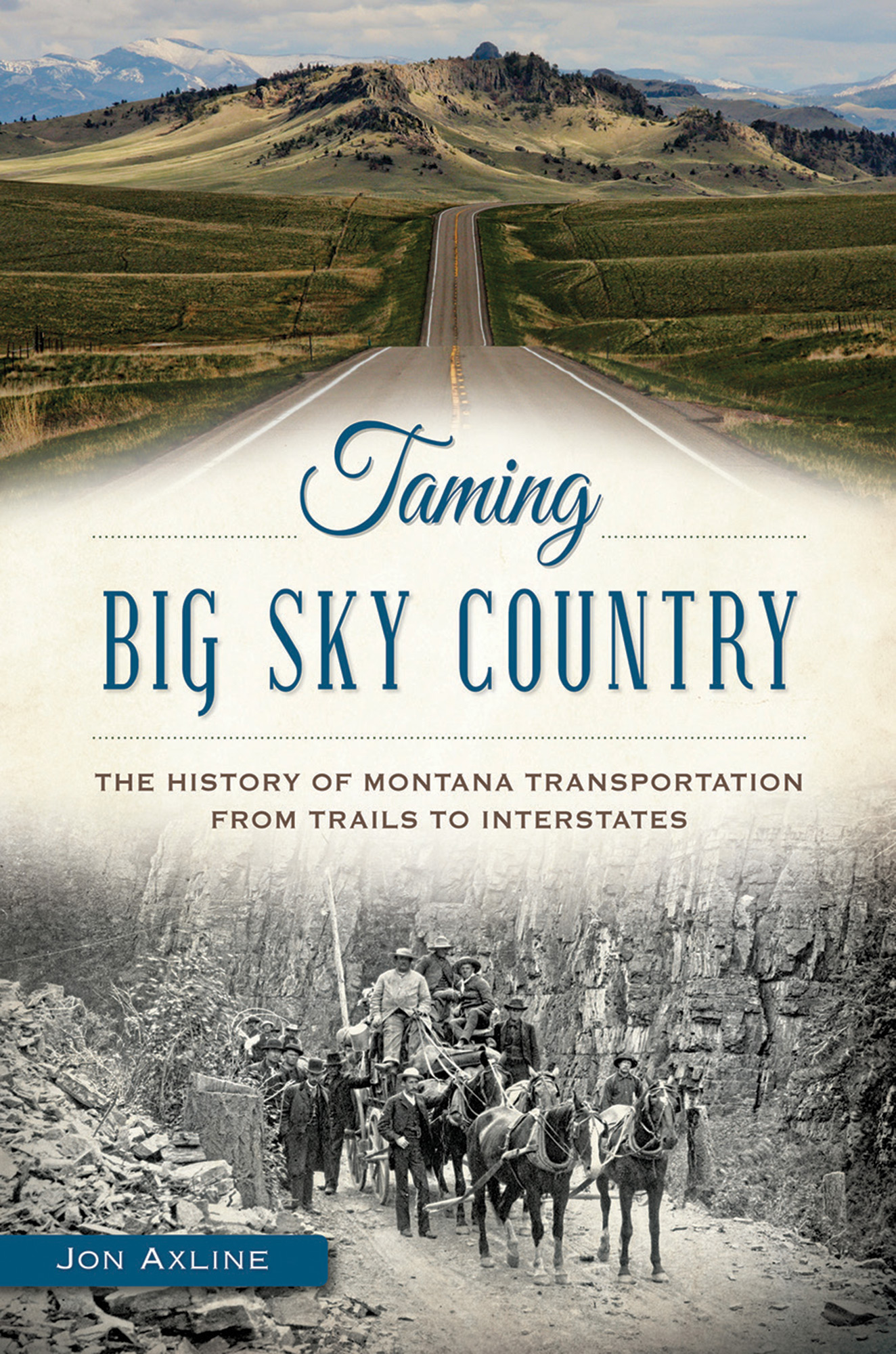
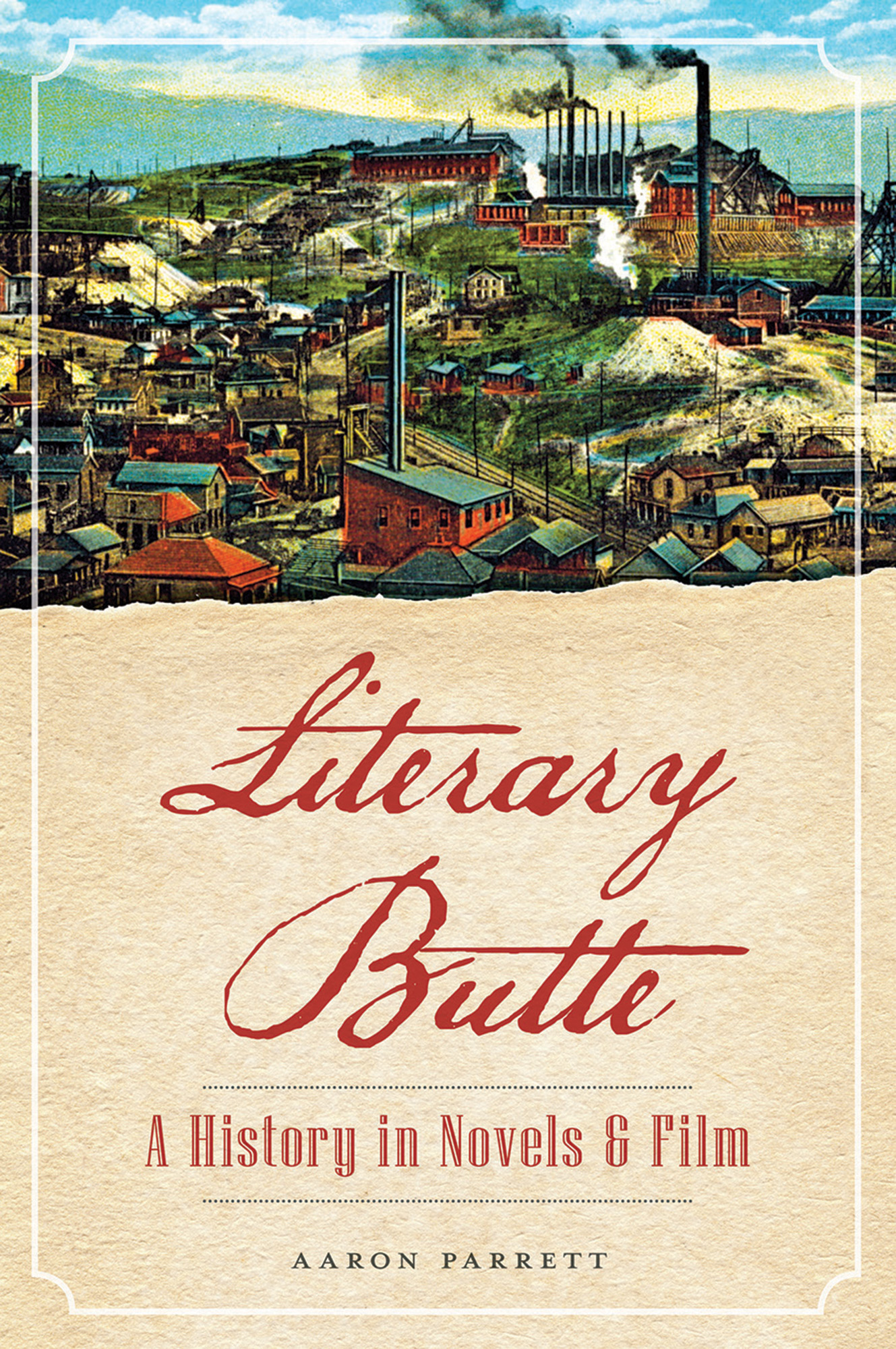
No Comments